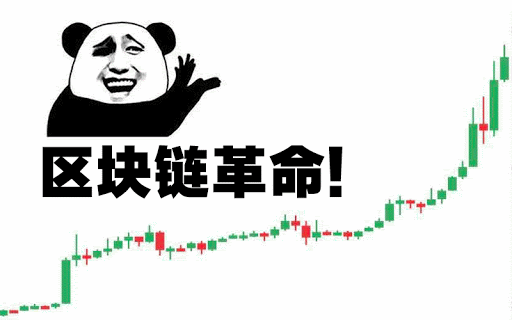Hi, I’m Shuyao Kong 孔姝尧. Da bing is my weekly rumination of worthwhile news happening in China’s crypto ecosystem. I’m particularly passionate about uncovering untold stories and portraying entrepreneurs who are doing cool stuff, all from the eyes of someone who’s both local and international.
If culture is capable of anything, then it is finding that which unites us all

As the whole world watches the unfolding of the #GME saga and the power of meme, the Chinese crypto circle also engaged in a discussion of its own. This week’s da bing explores how memes have grown and manifested in China. More importantly, how our crypto communities have used memes to express collective subconsciousness.
Meme as a way to express the unexpressible
Compared to western civilization, China’s unique political structure allows no room for disgruntled citizens to voice anti-government opinions. Since many societal issues are buried in the darkest corner, memes come to rescue as they surface unfavorable opinions by expressing them with a sense of humor.
The humor is key.
Take the popular Meme 996 as an example. 996 is a commonly practiced work schedule where Chinese tech employees go to work from 9am to 9pm, 6 days a week ( though people in the crypto world would argue that we practice 24/7 as the market never rests).
996 became an instant hit in China because it surfaced what many have considered an inherently unjust social norm. How come, despite Chinese labor law that explicitly forbids 996, and unfortunate incidents (e.g. two deaths at Pinduoduo, a Chinese e-commerce site), most Chinese companies still practice a slave-like working culture? When will Chinese companies start to treat their people, like real people?
996 is a meme but also a collective cry-for-help.
Many identify with the pain and realized that other than spreading funny stickers on WeChat, there’s little one can do, for now. (there was an anti-996 movement that gained global support but has not moved the needle among domestic companies).
Meme magnifies the fundamentals: Maotai
If Bitcoin is the crypto community’s most successful Meme thus far, then Maotai has to be the Bitcoin of China’s public market.
Unknown to those outside of China, Maotai is a type of baijiu, which you can think of as China’s tequila. Except, Maotai isn’t your average 5-dollar baijiu that tastes like ethanol. Well, it still tastes like ethanol, but it’s the only baijiu that’s been endorsed by Chairman Mao, not only as his personal favorite but also "drink of diplomacy."
Why is Chairman Mao a fan of Maotai? Just like Bitcoin’s scarcity, Maotai can only be produced in Maotai town by a company called Kweichow Moutai Co, Ltd. The company has capped its supplies to maintain the prestige.
But what’s more striking about Maotai isn’t how popular the liquor is, but how quickly it has gained market recognition as one of the most valuable companies in China’s stock market.
As of Jan 2021, Maotai hit a market cap of $540 billion, surpassing not only traditional distillers but also prestigious western brands such as Toyota, Nike, and Disney.
What’s sustaining the valuation? Chinese consumers’ beliefs that Maotai isn’t just a commodity. It’s rare, irreplaceable, and timeless. For as long as that belief holds, investors will continue to rush in and #hodl the stonks.
As the saying goes “I think if we drink enough Moutai, we can solve anything.”
Crypto memes: China edition
Unsurprisingly, China’s first significant crypto meme is a copy cat of a western one. NEO, the first China-born crypto project that gained international recognition, is known as the Chinese version of Ethereum, even though the former had little adoption, let alone its sluggish token price.
As the 2017 ICO passed and the market corrected itself, the Chinese crypto community took refuge in the “leek” meme, which describes retail investors as leeks waiting to be cut by knives, aka projects/investors that pump and dump shitcoins. The meme provided comfort during the three-year bear market because it made investors feel that they aren’t the only ones losing money. The leek meme was further legitimized after Bitcoin influencer Xiaolai Li published a book called “The Self-Cultivation of Leek.”
Different crypto circles have different memes. The mining circle constantly produces memes around mining catastrophe, a fear that either bitcoin price would crash, or mining difficulty would skyrocket.
As DeFi summer approached and heat up, China’s crypto communities also jumped on the train of farm token creation. Instead of simply taking any food as a meme, many wanted a China-focused theme. For example, WePiggy, a DeFi asset lending protocol, borrowed Chinese’ favorite animal: Pig, which is often associated with wealth, prosperity, and abundance. Not sure the same meme would work in a different culture ( e.g. the Arab culture).
A good Chinese crypto meme has to marry two distinct elements: China and crypto. On the one hand, the meme has to be understood by China’s unique political and cultural background, preferably in local languages. On the other hand, it needs to be connected with crypto’s borderless and almost anarchistic nature.
That’s why the first gif at the beginning of this newsletter has stood the test of time. It’s classic because it perfectly illustrates Chinese crypto investors’ dilemma: in our heart, we want crypto to be a revolution, but at the end of the day, the price determines everything.
China’s crypto circle has little romanticism.
Can #GME happen in China?
The simple answer is no because the Chinese stock market is highly regulated, with little short-selling. The exchanges are forced to suspend trading if the CSI 300 Index rise or fall by 7% or more from its previous close.
That’s when the government pulls the brake.








